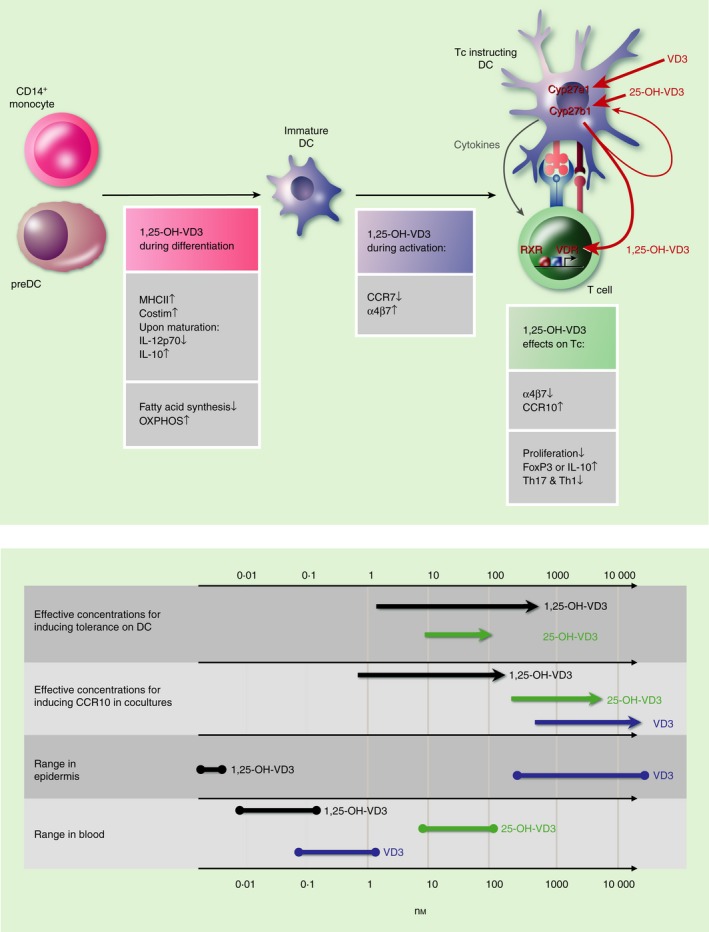Figure 2.

Calcitriol (1,25‐OH‐VD3) and dendritic cell (DC) function during different stages of immune activation. Upper panel, left: 1,25‐OH‐VD3 acting on granulocyte–macrophage colony‐stimulating factor (GM‐CSF) ‐differentiating precursors renders DC ‘tolerogenic’ by inhibiting T‐cell stimulation pillars, especially after DC maturation (e.g. performed with tumour necrosis factor‐α or lipopolysaccharide). Also, profound metabolic patterns are induced to promote oxidative phosphorylation and reduce fatty acid synthesis. Middle: 1,25‐OH‐VD3 during DC maturation alters trafficking receptor profiles to redirect migration (see text). Right: Maturation induces DC‐intrinsic up‐regulation of Cyp27b1. Paracrine DC‐derived 1,25‐OH‐VD3 serves as a fourth pillar of DC : T‐cell interaction and promotes regulatory T‐cell generation, inhibits effector T‐cell proliferation and imprints trafficking patterns in instructed T cells. Autocrine 1,25‐OH‐VD3 possibly has effects on DC themselves as well. Lower panel: range of concentrations of VD3 and metabolites in blood and epidermis in vivo and required for immune effects in vitro.
